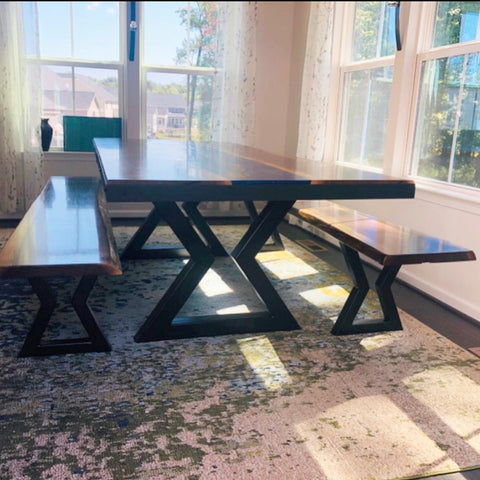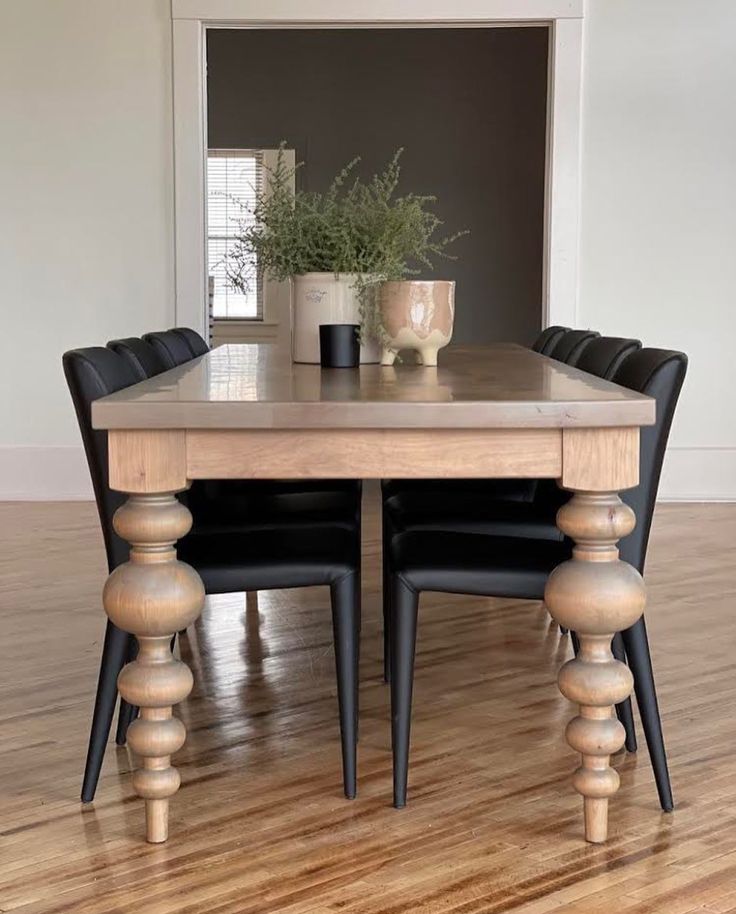How to Maintain and Care for Your Dining Room Table Legs
How to Maintain and Care for Your Dining Room Table Legs
Blog Article
Expert Tips for Setting Up Dining-room Table Legs for Maximum Stability
When it comes to mounting dining room table legs, attaining maximum security is critical for both capability and visual appeals. What particular techniques can boost stability also better?
Pick the Right Legs
When selecting the appropriate legs for your dining-room table, it is vital to take into consideration both capability and visual appeals. The legs you choose will dramatically affect the overall layout and stability of the table. Initially, evaluate the table's planned use; if you anticipate frequent gatherings, tougher legs, such as those made from solid wood or metal, might be preferable, as they supply raised toughness and support.
Typical eating tables normally vary from 28 to 30 inches in elevation, so guarantee the legs align with this standard for comfort. Tapered legs can add a modern touch, while transformed legs could communicate a more timeless aesthetic.

Select Appropriate Hardware
How can the best equipment boost the stability and longevity of your dining space table? The option of suitable equipment is crucial to making certain that the legs of your table are securely connected and able to stand up to normal usage. Top notch screws, screws, and braces offer the needed toughness to sustain the weight of the table, as well as any extra tons positioned upon it throughout gatherings or meals.
When choosing screws, go with those made from durable materials such as stainless steel or brass, which withstand rust and keep integrity over time. The length of the screws is equally essential; they must pass through deeply right into the table's framework without compromising stability. For bolted connections, think about utilizing lock washing machines to protect against loosening up due to resonance or activity.
In addition, making use of edge brackets can include added support, especially for bigger tables or those with much heavier tops. These brackets disperse weight uniformly and assist maintain the table's form. Guaranteeing that the hardware you choose is suitable for the specific products of your table will further improve its overall security and durability, allowing you to appreciate your dining experience for several years to find.
Ensure Proper Placement
Appropriate placement of dining-room table legs is important for both visual charm and functional security. Misaligned legs can lead to an irregular tabletop, which might not just be visually uninviting yet likewise compromise the table's functionality. To achieve ideal alignment, start by measuring the distance from the table's edges to the leg attachment factors. This ensures that each leg is positioned equidistant from the sides, creating a well balanced look.
Utilize a level during setup to validate that each leg is perpendicular to the tabletop. It is suggested to note the desired leg placements on the bottom of the table with a pencil or covering up tape before safeguarding them.
In addition, double-check the placement after the initial screws are tightened, as modifications may be required before completely protecting the hardware. By prioritizing proper alignment, you not just boost the table's total layout however likewise make sure that it stays functional and steady for many years to come.

Take Into Consideration Weight Distribution
After making sure appropriate alignment of the eating space table legs, it is essential to consider weight circulation to improve stability and capability. dining room table legs. Appropriate weight distribution is important in avoiding tottering and making sure that the table can support its desired tons without threat of tipping or breaking down
When placing the legs, ensure they are positioned at equal ranges from the center of the table to equally distribute the weight across the framework. Take into consideration the weight of the table top and any type of items that will often hinge on it, such as tabletop appliances or ornamental items. Tables with heavier surface areas should ideally have legs located closer to the corners, as this makes best use of the base of support and decreases the risk of instability.
In addition, if the table is intended for use in a high-traffic location, take into consideration using much heavier products for the legs or including maintaining elements, such as cross-bracing or a reduced rack - dining room table legs. These adjustments can assist keep equilibrium and avoid moving throughout usage. Ultimately, a well-considered weight distribution method will significantly improve the table's general efficiency, guaranteeing it remains a eye-catching and useful focal point for your dining space
Test Stability Before Use
Checking the security of the eating area table prior to usage is a crucial step that must not be forgotten. Ensuring that the table is protected and stable can avoid mishaps and extend the life expectancy of the furniture. Begin by using gentle stress to numerous factors on the table surface area. Lower on the facility and afterwards along the edges, shifting or observing any wobbling. If the table shows instability, recognize the continue reading this legs or joints that might need modification.
Following, inspect that all screws and fasteners are tightened up appropriately. Loose connections can bring about instability and prospective damages in time. If necessary, use timber glue on joints to boost security, making sure to allow adequate drying out time.

Conclusion
To conclude, the installment of dining-room table legs requires cautious factor to consider of materials, weight, placement, and equipment distribution to accomplish optimum security. By picking top quality fasteners and strong go right here legs, ensuring accurate positioning, and dispersing weight uniformly, the architectural honesty of the table can be significantly enhanced. Carrying out a security test prior to routine usage additionally makes certain that the table will withstand everyday pressures, thus offering a secure and trusted eating experience.
When it comes to installing eating area table legs, attaining optimum security is vital for both capability and aesthetics. The reference legs you choose will significantly impact the total layout and security of the table (dining room table legs). Typical eating tables typically range from 28 to 30 inches in height, so ensure the legs align with this criterion for comfort.Appropriate placement of eating space table legs is important for both visual charm and practical security.In conclusion, the setup of dining room table legs needs careful consideration of materials, placement, hardware, and weight circulation to accomplish maximum security
Report this page